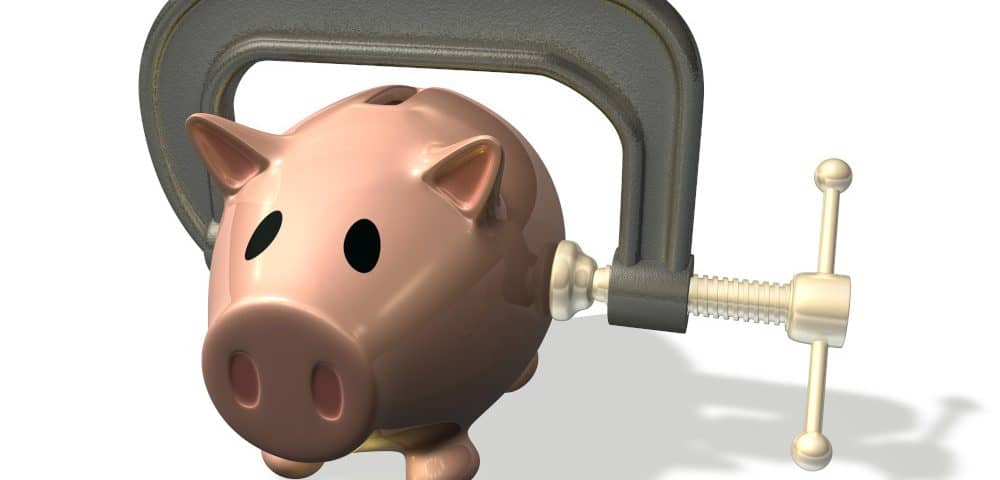This website uses cookies so that we can provide you with the best user experience possible. Cookie information is stored in your browser and performs functions such as recognising you when you return to our website and helping our team to understand which sections of the website you find most interesting and useful.

The Economic Impact Of Tighter Lending Standards
December 5, 2020
Double Helix Bucks Rate Increase Trend
December 30, 2020According to a recently released survey conducted by the Federal Reserve, banks across the United States have started implementing stricter lending standards. The new standards come just six months after the Federal Reserve lowered interest rates to historic lows.
“Major net shares of banks that reported reasons for tightening lending standards or terms cited a less favorable or more uncertain economic outlook, worsening of industry-specific problems, and reduced tolerance for risk as important reasons for doing so,” said a spokesperson for the Federal Reserve.
The survey indicates that when banks consider lending money to businesses, they significantly lower credit limits and insist on higher credit scores to qualify for loans. Businesses that cannot meet the new lending standards face the prospect of closure.
If lending standards for industries such as automotive and commercial real estate have tightened considerably, what do the new lending standards mean for high-risk businesses that often have trouble finding sources of liquidity?
What Businesses Are Considered High Risk?
Risk represents the most significant factor banks consider when analyzing loan applications. Banks want to work with businesses that have proven they can meet their financial obligations, such as paying off loans on time. The question is what are the factors that determine whether a business should be considered “high-risk?”
Startups
Startups and new businesses fall into the high-risk category because they have not established a proven record of financial success. A business that has turned a profit for years can receive quick approval for a loan because the business owner can present bank statements, income tax returns, and profit and loss statements to support the loan application. On the other hand, an entrepreneur making a go of it for the first time has no financial paperwork to show a bank.
Low Revenue
Banks prefer lending money to businesses that generate more than enough money to cover all debts, including new loan payments. Businesses that generate lower than average revenues have difficulty demonstrating they can meet every loan payment. Seasonal businesses like the ones that depend on winter holiday shopping are especially vulnerable to the low revenue issue.
Poor Credit
Most lenders consider the credit score of a business owner to be one of the most important factors in making lending decisions. The higher the credit score, the more likely the business receives approval on a loan application. Past-due utility bills, late payments on credit cards, and a high credit card utilization rate all contribute to a lower credit score. Business owners that have bad credit can apply for what is called bad credit loans, although the interest rates are much higher than the interest rates charged on good credit loans.
The Industry is Considered Unstable
Some businesses operate in unstable industries that make lending money a high-risk financial decision. Not even an inflated interest rate makes up for the risk assumed by dealing with a business that operates in a high-risk industry.
Here are a few examples of high-risk industries:
- Agriculture
- Alcohol
- Construction
- Hospitality
- Insurance
- Nightclub
- Retail
- Travel Agency
Lending Options for High-Risk Businesses
The Federal Reserve does not expect the new normal of stricter lending standards to go away anytime soon. Even when the COVID-19 pandemic wanes, banks expect to wait until the economy shakes out the businesses that could not survive the shutdowns and a dramatic decrease in walk-in traffic. All the high-risk businesses listed above have taken a beating during the pandemic, as have many other industries that experienced financial distress for the first time in years.
Do high-risk businesses have lending options under the new, stricter standards mandated by banks. The answer is yes, with one specific option the best option on the list.
Short-Term Loan
Typically paid off within one year, a short-term loan does not have the same strict lending standards as other types of lending options. Revenue, credit score, and industry volatility do not matter as much as they matter for conventional bank loans. High-risk businesses that take out short-term loans can expect to pay higher than average interest rates.
Merchant Cash Advance
Merchant cash advances are paid back by calculating a percentage of future credit card sales. This is the preferred lending option for high-risk businesses that go through seasonal sales slumps. The merchant cash advance model allows a business to pay less when sales are down.
Personal Loan
For a high-risk business that has struggled financially and needs a quick infusion of cash, the owner can take out a personal loan instead of taking out a business loan. The business owner’s credit score must be high enough to qualify for a loan. Banks and alternative lenders offer personal loans and, in most cases, the application process is not as complex as it is for a business loan.
The Best Lending Option for High-Risk Businesses
It is not just banks that label some businesses as high-risk for lending purposes. Banks also label businesses as high-risk for credit card processing reasons as well. Whether a business presents a reputational risk or it has a high chargeback rate, banks require more money to cover the high risk of working with a business.
Double Helix Payment Processing specializes in getting approvals for businesses that receive rejection letters from other sources. We get high-risk businesses approved for merchant processing accounts at the most affordable rates. Do not allow banks to place a damper on your business vision. Contact Double Helix today to learn more about setting up a merchant processing account.





